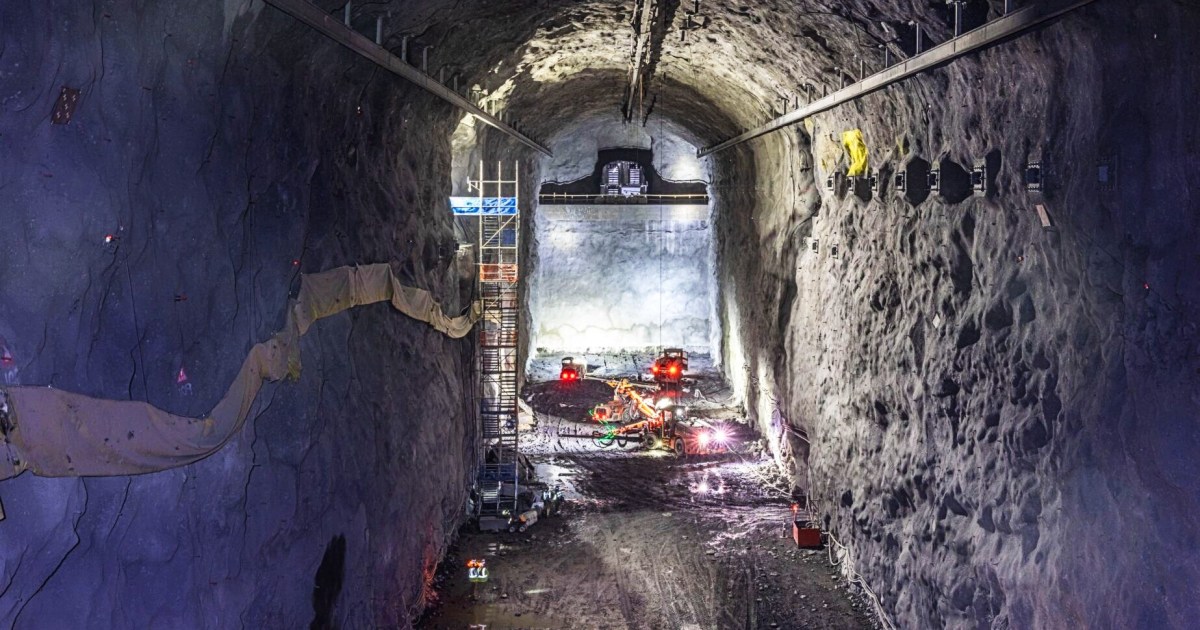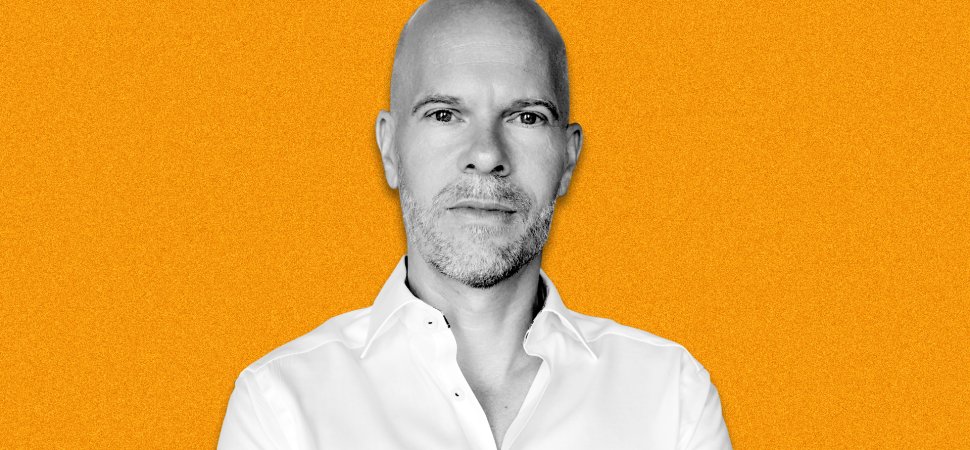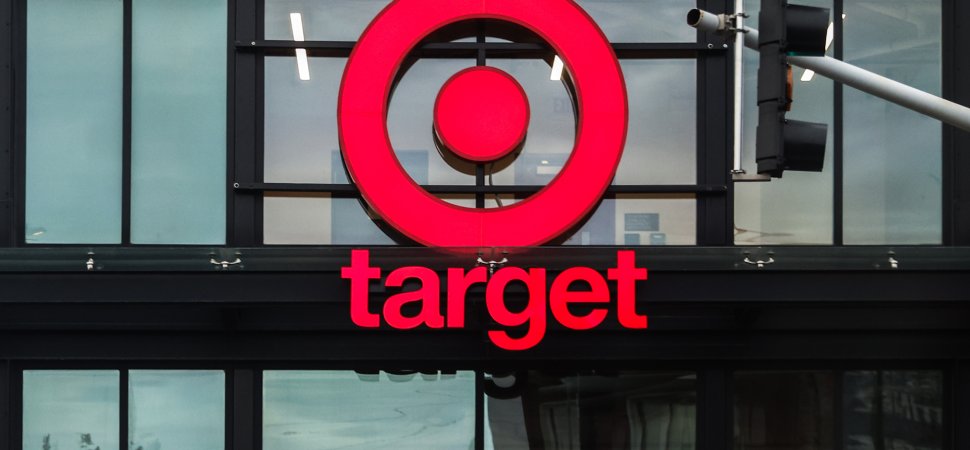| ? |
 |
|
Don't like ads? Go ad-free with TradeBriefs Premium    
CEO Picks - The best that international journalism has to offer!  S17 S17Building Resilience by Wasting Time   As a game designer, I’m often accused of helping people waste substantial portions of their lives. And no wonder: Worldwide, we spend 7 billion hours a week playing video games—300 million minutes a day on Angry Birds alone!—with seemingly nothing to show for it. But research suggests that engaging in some activities we assume are […]
Continued here
|
 S34 S34Did Australia's boomerangs pave the way for flight?   The aircraft is one of the most significant developments of modern society, enabling people, goods and ideas to fly around the world far more efficiently than ever before. The first successful piloted flight took off in 1903 in North Carolina, but a 10,000-year-old hunting tool likely developed by Aboriginal Australians may have held the key to its lift-off. As early aviators discovered, the secret to flight is balancing the flow of air. Therefore, an aircraft's wings, tail or propeller blades are often shaped in a specially designed, curved manner called an aerofoil that lifts the plane up and allows it to drag or turn to the side as it moves through the air.
Continued here
|
| ? |
 |
 S39 S39Where Does Outer Space Begin?   The popular limit of a 100-kilometer altitude for the edge of space should probably be adjusted down to 80 kmSometimes really interesting questions can be asked very simply. For example, where does outer space begin?
Continued here
|
 S62 S62Building a free speech culture with Greg Lukianoff   Greg Lukianoff, president of the Foundation for Individual Rights and Expression (FIRE) discusses how free speech has evolved – from its induction into the United States Constitution, to its prevalence on modern American college campuses. But with cancel culture more relevant than ever, is free speech at risk? When, if ever, should speech be controlled? When are speech moderators in the wrong? And when should people in power choose not to speak at all? Lukianoff explains all this and more, in this interview with Freethink’s Editor-in-chief, Robert Chapman-Smith.
Continued here
|
| ? |
 |
 S16 S16From Bad Bosses to Career Changes: The Hosts of HBR's Advice Podcast on One Year of Answering Listener Questions   A year ago, HBR launched a workplace advice podcast in which two co-hosts and an expert guest answer questions from listeners struggling with workplace problems. We got letters from people living on every continent but Antartica and working in roles from entry-level jobs to the C-suite across varied industries and functions wrote in. After 28 episodes on topics ranging from toxic workplaces, to lateral moves, to annoying subordinates, we’ve identified several recurring themes. These include: your relationship with your boss really matters, job-crafting can only take you so far, it’s hard to “swim in your lane,” and many more.
Continued here
|
 S63 S63Alan Wake 2: Blurring the lines between gaming and revelatory art   Science is one route to the truth. Across the millennia, drawing on many diverse influences, we humans figured out a way of interrogating the world that reveals features we can all agree on (like, for instance, the acceleration of a falling object due to gravity). But art goes back even further. While art doesn’t have the same “objective” criteria as science (meaning everyone, everywhere agrees), it can reveal aspects of human experience that resonate as potent, revelatory, and true. But what’s possible with art, just like science, depends on the technologies we have for making it. I was given a master class in exactly this possibility last week when I finished the extraordinary video game Alan Wake 2 from Remedy Studios. The game (or should I call it “the work”) raises profound questions about how art functions, what allows it to be truthful, and how new technologies allow that truth to happen in new ways, which may even allow it to raise new truths.
Continued here
|
| ? |
 |
|
| ? |
 |
|
|
 S43 S43 S54 S54 S29 S296 Questions to Ask at the Midpoint of Your Career   It’s common to wrestle with feelings of unmet expectations, missed opportunities, and paths not taken when you reach the midpoint of your career. But experts say that arriving at middle-age is also a profound opportunity for growth and self-reflection. It’s a chance to reevaluate your priorities, draw from your experience, and carve out a path that aligns with your goals for the second half of your professional life.
Continued here
|
 S4 S4The New-Market Conundrum   Brand-new markets are like the wormholes of science fiction, where the usual rules of time and space do not apply. When a market has just been born, the forces of competition there are constantly in flux, it’s unclear who your customers really are, and conventional strategies just don’t make sense. How then can you navigate this constantly shifting terrain?
Continued here
|
 S37 S37How to Make Urban Agriculture More Climate-Friendly   The process of growing fruits and vegetables in cities can emit more carbon than conventional farmingStroll through any trendy neighborhood of Brooklyn, N.Y., and you’ll notice little pockets of green tucked between the concrete and brownstones. Many of these miniature oases are community gardens, spaces dedicated to growing produce ranging from kale to squash to tomatoes right in the heart of the city. Such projects are often seen as a climate solution—a way to enjoy fresh, local food with minimal environmental impact. But though these spaces have many upsides, reducing carbon emissions isn’t always one of them.
Continued here
|
 S8 S8Preparing for Your Next Career Move   Thinking about your next career move can feel daunting, but there are ways to cope. Our first chart, “Mapping Your Past to Plan Your Future,” helps you ask important questions about your life. For example, does the job or career you want meet your needs? Why? And how? Knowing your negotiables (and nonnegotiables) can help you evaluate opportunities that offer different directions.
Continued here
|
 S15 S155 Reasons to Leave Your Job -- Even in a Downturn   In a tight labor market, especially when news of large and small-scale layoffs continues to proliferate, it might seem inadvisable to look for a new job if you’re employed. But if you’re not engaged in your work, that will eventually show, which could put your career at risk. Once you realize you’re spending 40 hours weekly feeling unfulfilled, it’s always better to control your destiny than wait for others to decide your fate for you. Consider what steps you can take to reengage or whether a new job will make you feel more fulfilled. The author presents five signs that it’s worth looking for a new job elsewhere.
Continued here
|
 S20 S20 S45 S45A Dog Breed's Size and Face Shape Might Predict How Long It Lives   Every dog has its day, but some dogs get more days than others. Toy poodles can live 18 years or more, while the average Great Dane is lucky to live half that long. This large discrepancy in the life spans of animals within a single species is uncommon, yet scientists aren’t sure which traits help certain dog breeds outlive others.Researchers in England recently set out to determine what impacts canine life expectancy. The team amassed a dataset of more than 580,000 domestic dogs of more than 150 different breeds in the U.K. Their findings, published on Thursday in Scientific Reports, reveal that traits such as size, sex and head proportion are likely to have a large impact on how many years of life a certain canine has.
Continued here
|
 S58 S58 S66 S66 S19 S19 S48 S48Jordan Yob, Senior Brand Marketing Manager at Saucony   In this episode, Wharton experts speak with Jordan Yob, senior brand marketing manager at Saucony.Wharton’s Barbara Kahn and Dr. Americus Reed speak with Jordan Yob, senior brand marketing manager at Saucony, about the heritage of Saucony, the importance of staying consumer-focused, and the “marathumb challenge.”
Continued here
|
 S69 S69A startup allegedly "hacked the world." Then came the censorship--and now the backlash.   Hacker-for-hire firms like NSO Group and Hacking Team have become notorious for enabling their customers to spy on vulnerable members of civil society. But as far back as a decade ago in India, a startup called Appin Technology and its subsidiaries allegedly played a similar cyber-mercenary role while attracting far less attention. Over the past two years, a collection of people with direct and indirect links to that company have been working to keep it that way, using a campaign of legal threats to silence publishers and anyone else reporting on Appin Technology’s alleged hacking past. Now, a loose coalition of anti-censorship voices is working to make that strategy backfire.
Continued here
|
 S13 S13 S61 S61Turn contradiction into success with the 4 "paradoxical marketers"   There’s an ancient Celtic poem called The Song of Amergin about a druid who arrives on the coast of Ireland. What’s unique about the poem is that most of its lines start with the words “I am,” followed by some name or detail. For instance:These are not the arrogant boasts of a chest-thumping bard. The poem is written to show that man cannot be reduced to one idea alone. Each of the names Amergin gives himself represents an aspect of his nature: a stag for strength, the sea for depth, a boar for coarseness, and so on. The noble and roguish, the ugly and beautiful, the public and private, are all represented by the names we wear.
Continued here
|
 S67 S67Mathematicians finally solved Feynman's "reverse sprinkler" problem   A typical lawn sprinkler features various nozzles arranged at angles on a rotating wheel; when water is pumped in, they release jets that cause the wheel to rotate. But what would happen if the water were sucked into the sprinkler instead? In which direction would the wheel turn then, or would it even turn at all? That's the essence of the "reverse sprinkler" problem that physicists like Richard Feynman, among others, have grappled with since the 1940s. Now, applied mathematicians at New York University think they've cracked the conundrum, per a recent paper published in the journal Physical Review Letters—and the answer challenges conventional wisdom on the matter.
Continued here
|
 S68 S68Over 2 percent of the US's electricity generation now goes to bitcoin   What exactly is bitcoin mining doing to the electric grid? In the last few years, the US has seen a boom in cryptocurrency mining, and the government is now trying to track exactly what that means for the consumption of electricity. While its analysis is preliminary, the Energy Information Agency (EIA) estimates that large-scale cryptocurrency operations are now consuming over 2 percent of the US's electricity. That's roughly the equivalent of having added an additional state to the grid over just the last three years.
Continued here
|
 S12 S12Why Great Innovation Needs Great Marketing   Innovation is a top priority for almost every organization. But to achieve success through innovation, companies must put as much energy and investment into marketing new offerings as they do in generating them. Marketing is and should not be executed merely through tactical functions of acquiring and retaining customers, as many companies practice it today. The full, business-growing power of the marketing function comes way upstream — from creating markets. Understanding people’s fundamental needs and drivers, identifying customers, and developing the entire go-to-market and usage ecosystem are the essential aspects of marketing — and the ones that the success of innovations, especially breakthrough ones, hinge upon. Marketers need to be included in development discussions earlier in the innovation process.
Continued here
|
 S7 S7Don't Persuade Customers -- Just Change Their Behavior   Most businesses underestimate how hard it is to change people’s behavior. There is an assumption built into most marketing and advertising campaigns that if a business can just get your attention, give you a crucial piece of information about their brand, tell you about new features, or associate their brand with warm and fuzzy emotions, that they will be able to convince you to buy.
Continued here
|
 S9 S95 Ways Marketing and Sales Leaders Can Embrace GenAI   Generative AI holds the promise of transforming marketing in all sorts of remarkable ways, but marketing leaders have been reluctant to embrace it and lag behind their peers in other fields. This and other findings emerged in a survey that the authors recently conducted with 600 business leaders from large U.S.-based companies. The authors lay out what they learned in the survey, describe many of the potential benefits that AI has to offer marketers, and argue that it’s time for leaders in the field to overcome their caution and start experimenting with the technology.
Continued here
|
 S26 S26 S56 S56 S57 S57 S59 S59 S64 S64Inside the mile-deep mission to solve a key physics mystery   Neutrinos are the ghosts of the subatomic world. Engaging in only the most tenuous of interactions with ordinary matter, they can pass through the entire Earth with only minuscule chances of any interaction. They are also quantum chameleons, meaning that the three different types of neutrinos can change their identity, with one type becoming another, before swapping back again. And perhaps most importantly, studies of this identity-changing behavior could explain why our familiar Universe looks the way it does.Because of these and other fascinating properties, scientists working at Fermi National Accelerator Laboratory (Fermilab, located just outside Chicago) are building a powerful new beam of neutrinos to better understand their behavior. A recent milestone has brought them much closer to achieving their goals.
Continued here
|
 S6 S6I Am My Own Database   Individuals and businesses have long tussled over who owns consumers’ personal data. The decisive blow may be struck by customer-managed interaction, a new service model whose implementation is on the horizon. Superficially, CMI declares consumers victorious by ceding them total control over information about their past purchases and product preferences. But it also helps companies harvest the deep consumer knowledge that customer relationship management (CRM) only promises.
Continued here
|
 S10 S10A "Bad Dream" Can Make for Great New Ideas   The CEO of an autonomous region for a multinational called with a problem. “We’re too successful,” he said. “We’re number one in the country, not only within my company but across the entire industry. Take your pick of the metric — profit, market share and customer satisfaction — we win.”
Continued here
|
 S33 S33Message sticks: Australia's ancient unwritten language   The continent of Australia is home to more than 250 spoken Indigenous languages and 800 dialects. Yet, one of its linguistic cornerstones wasn't spoken, but carved.Known as message sticks, these flat, rounded and oblong pieces of wood were etched with ornate images on both sides that conveyed important messages and held the stories of the continent's Aboriginal people – considered the world's oldest continuous living culture. Message sticks are believed to be thousands of years old and were typically carried by messengers over long distances to reinforce oral histories or deliver news between Aboriginal nations or language groups.
Continued here
|
 S41 S41Why Is Superconductivity Research Plagued by Controversy?   A materials scientist unravels the hype around research on high-temperature superconductor research like LK-99High-temperature superconductivity is one of the holy grails of physics. It also seems to attract a steady stream of controversy, with a recent string of retracted papers and provocative claims that haven’t held up to scrutiny.
Continued here
|
 S3 S3LBOs for Smaller Companies   If you want to buy a company but don’t have the cash, consider a leveraged buyout. Headlines in the business press to the contrary, most LBOs are not management-led megabuck deals for billion dollar companies. Entrepreneurs have used leverage to buy smaller, privately held businesses for years: whenever a buyer lacks the requisite cash and borrows part of the purchase price against the target company’s assets (receivables, equipment, inventory, real estate) or cash flow (future cash), that’s an LBO.
Continued here
|
 S5 S5To Prove Your Company Isn't Greenwashing, Endorse Smart Regulation   Whether you call it propaganda or greenwashing, companies have long used marketing to tout the good they do for the environment while obfuscating any negative externalities of their businesses. However, thanks to the rise of the internet and social media and the proliferation of data on ESG performance, consumers (and employees) are now acutely aware of whether organizations are actually practicing what they preach. Conversations with advocates, regulators, consumers, and executives suggest that the most powerful way for businesses to prove they do so is to support meaningful regulations to ensure that their entire sector or industry will do the right thing. This includes exiting lobby groups that fight against such measures, communicating more regularly with regulators, and endorsing and advocating for more science-backed regulation.
Continued here
|
 S11 S11When Providing Wait Times, It Pays to Underpromise and Overdeliver   Virtual queues, or systems that allow you to hold your place without physically standing in line, have become commonplace in restaurants, call centers, and many other businesses — and how you build those systems can have a major impact on the customer’s experience. In this piece, the author shares key takeaways from over a decade’s worth of research on how companies can optimize their virtual queuing systems. Specifically, she suggests that providing wait time estimates can reduce customers’ average wait time, and that providing pessimistic estimates (i.e., telling customers they will have to wait longer than they actually will) can improve the customer experience. In addition, the research shows that providing more frequent progress updates also improves the customer experience, and that customers who wait for longer than expected will take longer when their turn finally arrives (suggesting that pessimistic estimates can also help businesses to increase throughput).
Continued here
|
 S23 S23  |
TradeBriefs Publications are read by over 10,00,000 Industry Executives About Us | Advertise Privacy Policy Unsubscribe (one-click) You are receiving this mail because of your subscription with TradeBriefs.
Our mailing address is GF 25/39, West Patel Nagar, New Delhi 110008, India |

















































































































